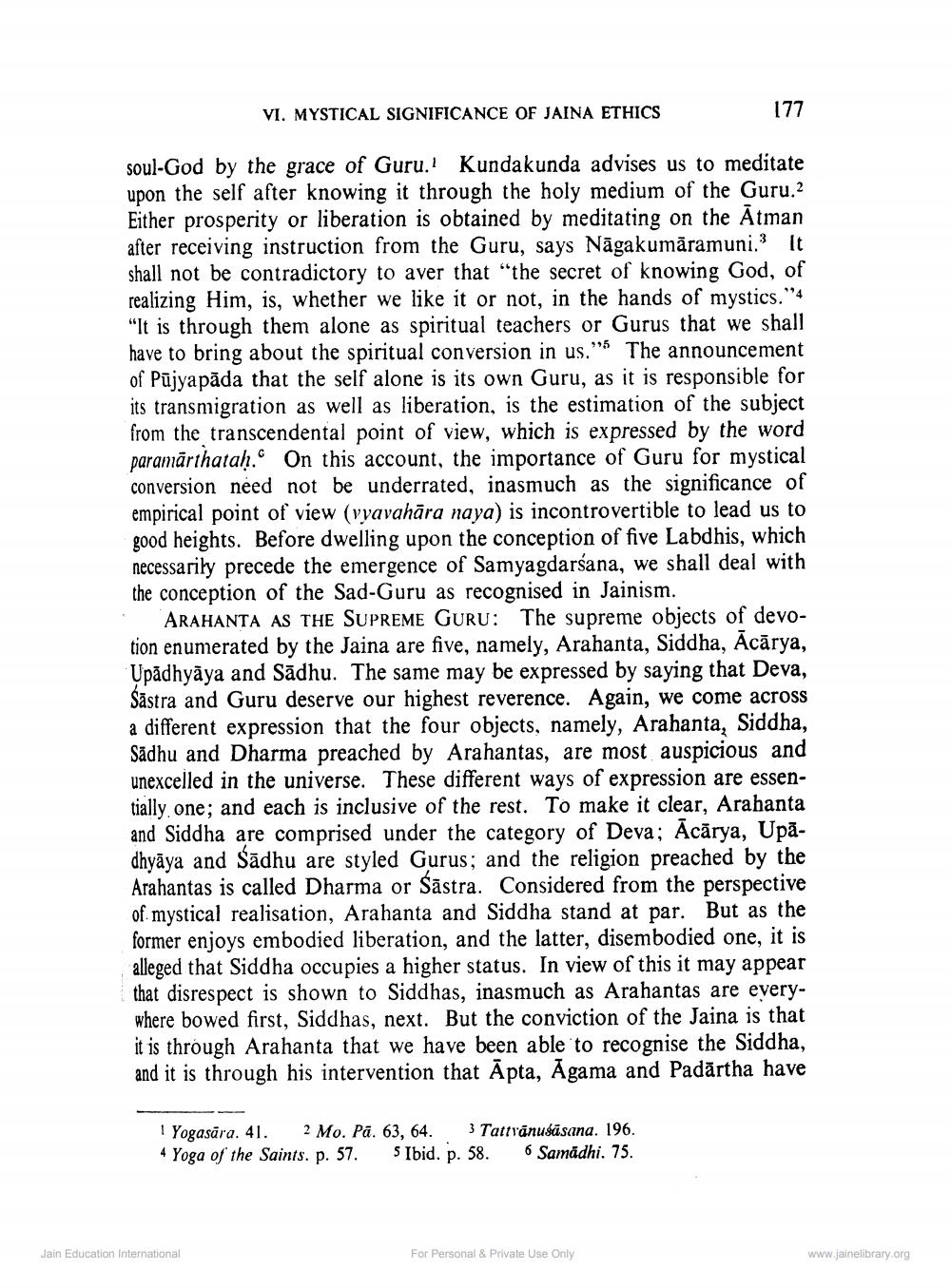________________
VI. MYSTICAL SIGNIFICANCE OF JAINA ETHICS
177
soul-God by the grace of Guru. Kundakunda advises us to meditate upon the self after knowing it through the holy medium of the Guru.2 Either prosperity or liberation is obtained by meditating on the Atman after receiving instruction from the Guru, says Nāgakumāramuni. It shall not be contradictory to aver that "the secret of knowing God, of realizing Him, is, whether we like it or not, in the hands of mystics."4 "It is through them alone as spiritual teachers or Gurus that we shall have to bring about the spiritual conversion in us." The announcement of Pūjyapāda that the self alone is its own Guru, as it is responsible for its transmigration as well as liberation, is the estimation of the subject from the transcendental point of view, which is expressed by the word paramārthatah. On this account, the importance of Guru for mystical conversion need not be underrated, inasmuch as the significance of empirical point of view (vyavahāra naya) is incontrovertible to lead us to good heights. Before dwelling upon the conception of five Labdhis, which necessarily precede the emergence of Samyagdarśana, we shall deal with the conception of the Sad-Guru as recognised in Jainism.
ARAHANTA AS THE SUPREME GURU: The supreme objects of devotion enumerated by the Jaina are five, namely, Arahanta, Siddha, Acārya, Upadhyāya and Sādhu. The same may be expressed by saying that Deva, Sāstra and Guru deserve our highest reverence. Again, we come across a different expression that the four objects, namely, Arahanta, Siddha, Sadhu and Dharma preached by Arahantas, are most auspicious and unexcelled in the universe. These different ways of expression are essentially one; and each is inclusive of the rest. To make it clear, Arahanta and Siddha are comprised under the category of Deva; Ācārya, Upādhyāya and Sadhu are styled Gurus; and the religion preached by the Arahantas is called Dharma or Sāstra. Considered from the perspective of mystical realisation, Arahanta and Siddha stand at par. But as the former enjoys embodied liberation, and the latter, disembodied one, it is alleged that Siddha occupies a higher status. In view of this it may appear that disrespect is shown to Siddhas, inasmuch as Arahantas are everywhere bowed first, Siddhas, next. But the conviction of the Jaina is that it is through Arahanta that we have been able to recognise the Siddha, and it is through his intervention that Apta, Agama and Padārtha have
1 Yogasāra. 41. 2 Mo. Pā. 63, 64. 3 Tattvānusāsana. 196. 4 Yoga of the Saints. p. 57. 5 Ibid. p. 58. Samādhi. 75.
Jain Education International
For Personal & Private Use Only
www.jainelibrary.org




